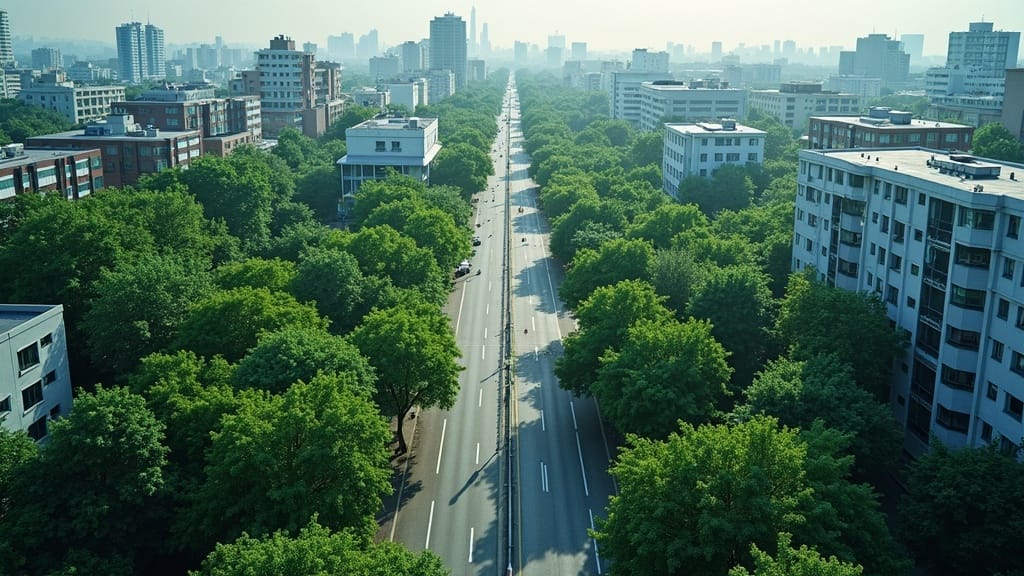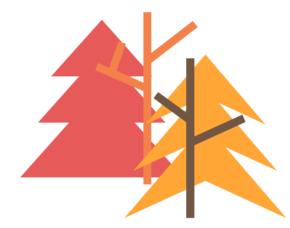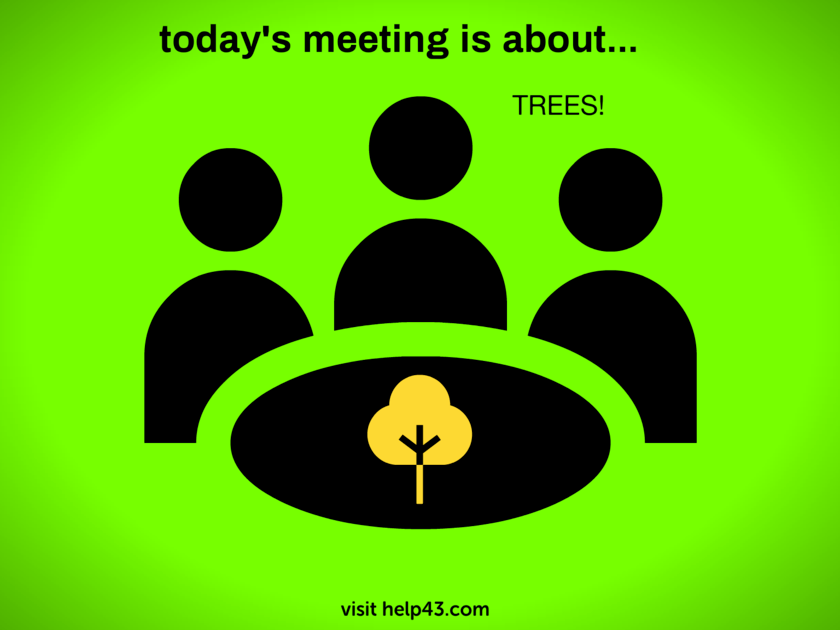Ai Tools For Urban Tree Management
Urban tree management has always been tricky, especially with cities constantly expanding and green spaces becoming increasingly limited. Recently, a new wave of AI tools has come onto the scene to help tackle challenges like keeping trees healthy, planning plantings, and even responding to emergencies such as storms. In this guide, I’ll show you how AI tools are making real improvements, the essentials to keep in mind before jumping in, and the everyday ways these digital helpers are keeping urban forests thriving.
How AI is Changing Urban Tree Management
AI hasn’t just modernized tech-intensive industries; it’s also shaping how urban forests get managed. With more people moving to cities than ever, the job of keeping trees in good shape, streets pleasantly shady, and urban air fresh is more important. Tree managers previously relied on periodic walking surveys, but those often skipped over smaller problems or weren’t efficient for sprawling cities. Now, AI-powered platforms take on complex tasks like detecting tree health, mapping tree locations, tracking species diversity, and flagging pest outbreaks all in record time.
Recent data shows cities using AI analytics process street tree inventories up to ten times faster than before. This not only saves money but also means city crews can react more quickly to potential tree illnesses or dangers. AI-driven mapping and analysis systems exist in locations from Singapore to Toronto, and more urban areas are getting on board every year.
Getting Started: What Makes Up AI Tree Management Tools?
AI tools for managing urban trees can vary widely based on their purpose. If you’re just starting out, here are some major building blocks to know:
- AI Image Recognition: Uses drones or street cameras to scan and identify trees, spot disease indicators, or flag branches that could fall.
- Predictive Analytics: Blends historic records and live information (like weather and soil readings) to predict everything from pest swarms to which trees may get damaged in storms.
- GIS Mapping Powered by AI: Lets you chart out tree types, ages, and condition across city maps, usually with help from satellite pictures for the latest updates.
- IoT Devices: Soil sensors, smart watering systems, and remote weather stations continuously supply data to AI systems, improving daily management decisions.
Most platforms feature dashboards so you can keep tabs on tree health or decide where new planting spots make the most sense. Software like TreeSense and OpenTreeMap are some good picks if you want to see this tech in action.
Quick-Start Guide to Using AI for Urban Forest Management
If you’re ready to try AI tools in managing trees, these steps help smooth the way:
- Build or Update a Tree Inventory: Use drones, smartphone apps, or smart cameras to gather recent data about every tree in your region.
- Select the Right Sensors: Install soil moisture sensors or canopy cameras for focused data streams that the AI can use.
- Choose an AI Platform: Pick tech that fits your needs—do you want predictive health checks, or is better mapping your priority?
- Integrate Your Data: Double-check that your chosen AI platform can work with your current spreadsheets, GPS files, and any old records. Seamless integration saves tons of time.
- Act on Insights: Set up notification systems so city teams get immediate alerts—for example, if a tree needs extra water or if pests pop up nearby.
This approach puts you ahead of issues instead of always reacting to fallen branches or dying trees.
Things to Keep in Mind Before Investing in AI Tree Management
While AI tools can be super helpful, they come with their own set of things to consider. Before you switch up your approach, think through these common issues:
- Data Quality: Your AI is only as strong as the data you feed it. Make sure your tree records and sensor inputs are accurate and current, or you’ll get off-base results.
- Upfront Costs: Sensors, drones, and high-end software can come with a hefty price tag. Fortunately, many cloud-based and open source options keep costs manageable.
- Training and Setup: It takes time for crews to learn how the dashboards work and how to interpret what the AI is telling them. Simple training sessions or step-by-step video guides make learning easier.
- Privacy and Security: If your project uses cameras or gathers info from citizens, be sure to check local privacy laws. Being proactive avoids future headaches.
Dealing with Data Quality
Mislabeled tree species, missing GPS tags, or old health ratings can throw off AI-powered systems. I recommend a quick review or mini audit of your records before plugging them into any AI tools. You might just need someone to do a sample check using a tablet or phone.
Balancing Budgets
Not every project needs expensive, top-tier gadgets to see benefits. Plenty of platforms do a great job just using smartphone photos and basic GPS data. Some programs harness the power of volunteer “tree stewards” to gather information with free apps.
Bringing Everyone Along
Change can be hard if crews or contractors aren’t familiar with the system. Set up hands-on sessions and encourage open feedback. People in the field usually notice right away what really works.
Respecting Community Privacy
Be clear about what is being recorded (are you just mapping public trees, or does it include private yards?). Transparency earns trust and dramatically reduces concern about data collection methods.
AI tools may sound like science fiction, but a practical rollout brings everyone up to speed and keeps learning curves smooth.
More Advanced Uses and Practical Tips
When you have the basics down, there’s a whole lot more that AI can offer for urban tree management:
Automated Risk Assessment: Advanced algorithms flag trees likely to break during storms. This lets cities get ahead on trimming or removals, helping reduce emergencies and property damage.
Species Planning and Diversity: Certain software can suggest which tree species to plant next, factoring in climate simulations and local biodiversity goals. This reduces the risk of widespread loss during extreme events or pest outbreaks.
Public Engagement: Apps now let everyday citizens tag new plantings, report damage, or adopt trees. AI helps automatically sort through these reports, prioritizing real problems and filtering out duplicates or less urgent notes.
Smart Watering: AI mixes weather forecasts and watering data from soil sensors to shape the most efficient schedules, saving money and conserving city water supplies.
Using these added features makes tree management more community focused, not just another city maintenance chore.
Popular AI Tools and Real-World Examples
Below are several platforms that municipal forestry staff and managers recommend:
- TreeSense: Combines sensor readings and aerial images with AI to check drought stress and tree disease in real time. Pilots in US cities have shown strong results during tough summers.
- OpenTreeMap: An open source tool, its AI can spot trees in satellite photos and crowdsource information from residents. Cities like Philadelphia and San Francisco use it to plan new plantings.
- i-Tree: Built by the US Forest Service, this system uses AI to estimate economic, health, and cooling benefits of city trees—handy for council budget talks.
- UrbanTree.AI: Specializes in using on-the-go photos from city maintenance vehicles to identify diseases and update inventories automatically.
Each tool specializes in slightly different tasks, so always look for a platform that fits your city’s needs and comfort level with new tech.

Frequently Asked Questions
Moving into AI-powered tree management raises a few questions. Here are answers to the most frequent ones:
Question: Can AI tools help with emergency planning for city trees?
Answer: Yes. Predictive software crunches weather records and tree health info to pinpoint which trees might fall, cause power outages, or block roads during storms.
Question: Is a big budget or technical staff required for these platforms?
Answer: Not all the time. Many teams run simple versions with affordable or free apps, getting help from volunteers or students. Large projects may need dedicated tech support, but most vendors include strong onboarding and continued help.
Question: Can local residents interact with AI-based tree tools?
Answer: Absolutely. A rising number of cities encourage residents to submit tree data, report problems, or use their phones to keep databases up to date and resourceful.
Wrapping Up: Thoughts on AI Tools for Urban Tree Management
AI is helping urban tree managers work faster, smarter, and better adapt to challenges that cities are facing. You don’t need a massive budget or a computer science degree to make a difference. Even simple AI tools—like improved mapping or early warnings—can save time and give a boost to your city’s efforts to care for its leafy canopy. The most important steps are to set clear goals, gather accurate data, and involve the community in the process. By working together and stepping up with data-driven tools, you ensure urban trees remain a vital, healthy part of the city for the long haul.
Trees in the city on Amazon
Botanicus Plus a GPT for starters and experts
Botnicus Plus boasts an array of new features, enhancing its global appeal and user interaction. These include: 1) Multilingual Support for accessibility in various languages. 2) Virtual Tours of famous botanical gardens and historical plant sites. 3) A Botanical Identification Tool for users to upload and identify plants. 4) Seasonal Guides and Tips tailored to local climates and regions. 5) Opportunities for users to engage in Collaborative Projects and Citizen Science Initiatives. 6) Advice on Sustainable Gardening Practices. 7) Interactive Q&A Sessions with botany experts. 8) Personalized Plant Care Reminders for gardeners. These features enrich Botnicus Plus’s mission to provide comprehensive, interactive, and culturally rich botanical education, fostering a deeper connection with the natural world.
Enjoy!👒
Invest in your future
Take time to learn
Embark on your journey in affiliate marketing and website creation alongside an incredible community and myself. Invest in your future by dedicating time to learn and earn. Take all the time you need to master the basics before aiming higher. Give it a try and sign up for free. You won't regret it! Discover the possibilities for yourself...


